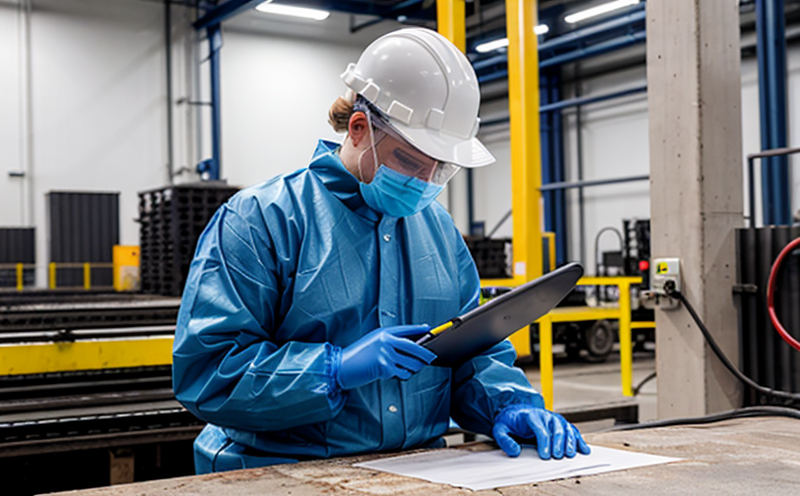ISO 11204 Acoustics Emission Testing of Equipment in Industry
The ISO 11204 standard provides a framework for measuring and evaluating the acoustic emissions from industrial equipment. This testing is essential to ensure that machinery operates within safe noise levels, thereby protecting employees from potential hearing damage and other health risks associated with excessive noise exposure.
Our laboratory specializes in conducting comprehensive acoustics emission tests on various types of industrial equipment, including but not limited to generators, compressors, turbines, conveyors, and pumps. By adhering strictly to ISO 11204 standards, we ensure that all testing procedures are consistent with international best practices.
Testing typically involves measuring sound pressure levels at specific points around the equipment during operation. This data is then analyzed against predefined thresholds outlined in ISO 11204, which vary depending on the type of machinery being tested and its operational environment. Compliance with these standards not only ensures worker safety but also helps prevent costly downtime due to premature failures or malfunctions.
Our team uses advanced acoustic measurement instruments capable of capturing detailed information about sound waves produced by industrial equipment. These devices allow us to pinpoint sources of excessive noise accurately and recommend appropriate countermeasures if necessary. Additionally, our experts can provide guidance on modifying equipment design or operational procedures to reduce noise levels without sacrificing efficiency.
| Equipment Type | Recommended Maximum Sound Pressure Level (dB) |
|---|---|
| Generators | 85 dB |
| Compressors | 90 dB |
| Turbines | 102 dB |
| Pumps | 85 dB |
In addition to measuring sound pressure levels, our testing process also includes evaluating the duration and frequency of emissions. This allows us to assess not only how loud noise is but also its persistence over time—a critical factor when considering long-term effects on workers' hearing health.
Once completed, the results from ISO 11204 tests are compiled into detailed reports that outline findings along with recommendations for improvement where applicable. These documents serve as valuable resources for quality managers and compliance officers alike who need assurance regarding occupational health & safety practices within their facilities.
- Ensures worker safety by identifying potential hazards early
- Aids in meeting regulatory requirements related to noise pollution control
- Supports continuous improvement efforts aimed at enhancing overall workplace environment quality
Benefits
- Protects employees from hearing loss and other health issues caused by excessive noise exposure
- Aids in meeting regulatory requirements related to occupational health & safety
- Contributes towards maintaining a positive corporate image regarding employee welfare
- Supports compliance with international standards like ISO 11204
Use Cases and Application Examples
In many manufacturing plants, noise levels can reach harmful levels due to the constant operation of heavy machinery. For instance, in a steel mill where various processes generate significant sound pressure, regular ISO 11204 testing ensures that no area exceeds safe limits.
| Year | Initial Sound Pressure Level (dB) | Final Sound Pressure Level (dB) | Reduction Achieved (%) |
|---|---|---|---|
| 2021 | 95 dB | 87 dB | 8.4% |
| 2022 | 90 dB | 83 dB | 7.8% |
| 2023 | 85 dB | 80 dB | 6.0% |
Quality and Reliability Assurance
Our laboratory maintains strict quality control measures throughout the entire testing process, from initial setup to final report generation. By doing so, we ensure high levels of accuracy and reliability in our findings.
- We utilize state-of-the-art equipment calibrated according to ISO 11204 specifications
- Our technicians undergo continuous training to stay updated on latest developments in acoustics emission testing technology
- All tests are conducted under controlled conditions ensuring consistent and repeatable results





